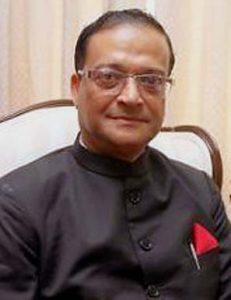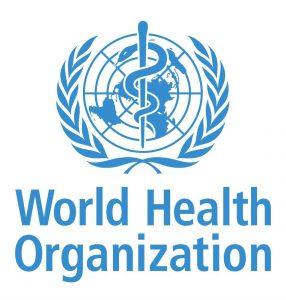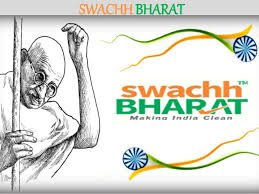 By Malay Mishra* in Puri, April 21, 2020: Social distancing, home isolation, quarantine are not unknown words in the Indian social vocabulary. Prevalent since ages, though in a vertical and not lateral sense as now, they have exemplified a total stratification of the society along caste lines and marginalization of the lowest castes. This practice has gone on since as long as the code of Manu has prevailed in a tightly regimented caste hierarchy.
By Malay Mishra* in Puri, April 21, 2020: Social distancing, home isolation, quarantine are not unknown words in the Indian social vocabulary. Prevalent since ages, though in a vertical and not lateral sense as now, they have exemplified a total stratification of the society along caste lines and marginalization of the lowest castes. This practice has gone on since as long as the code of Manu has prevailed in a tightly regimented caste hierarchy.
But then that vertical distancing and isolation pertained only to the lowest of the low though now the whole society is suffering from the same, and has been regimented in the individual’s space irrespective of her position, wealth or status.
In the recent times these words along with Wuhan and coronavirus entered the global lexicon with an innocuous beginning sometime towards the end of November last year. But then for several weeks after that the world did not take them seriously, there was an elaborate blanket of propaganda, misinformation, obfuscation and blame game that marred the seriousness of the situation.
This led to almost all countries (barring a handful) slipping back on preparedness while the China and the Communist Party of China (CPC) continued their propaganda battle misleading the world into several false directions, first to USA, thereafter to Italy, as the originator of the virus, until in January when the virus had been transmitted all over the world through Chinese travellers, business men and workers fanning out to countries of their interest, that the world took serious note of that, and the World Health Organization (WHO) declared it a pandemic, on January 11.
So did India, the country which had for centuries practised social distancing in the guise of beating down the existence of one particular group of people on the ground that they were inferior by birth did not take long to condition the Indian citizens to adopt social distancing as the new normal to fight the virus. The more debilitating virus of poverty and low caste was sidelined for the moment.
 The World Health Organization in its definition of ‘social distancing’ had actually meant physical distancing as it had elaborated as far back as November 2019 when it defined, social distancing or physical distancing as “a set of non-pharmaceutical interventions taken to prevent the spread of a contagious disease by maintaining distance of at least 2 meters or 6 feet”.
The World Health Organization in its definition of ‘social distancing’ had actually meant physical distancing as it had elaborated as far back as November 2019 when it defined, social distancing or physical distancing as “a set of non-pharmaceutical interventions taken to prevent the spread of a contagious disease by maintaining distance of at least 2 meters or 6 feet”.
In India this was a tall prescription and had to be adapted, given the local conditions of high density and lack of space, to 1 meter or 3 feet distance between two persons as they should keep space between themselves in their interaction inside and outside the house.
The other prescription was not to touch anybody, in other words practise ‘untouchability’ as per WHO prescribed guidelines, while the other prescriptions of washing hands with soap or rubbing with alcohol-based sanitizers and not placing the hands on the mouth, nose or other parts of the face were to be rigorously followed as well.
The ghastly sight a few weeks back of thousands of stranded migrant and daily-wage workers (comprising, along with other workers in the unorganized sector, nearly 90% of the total work force of India) trudging their way to an uncertain destination would be etched in the collective consciousness of the Indian society long after the coronavirus had subsided. Could they have abided by the government-held dictum of maintaining social distancing and washing hands when they had no water or food, not even shelter where they could practice these niceties?
Many of them could not reach their homes, they were stranded, way laid, had to be subjected to punitive actions for disobedience by local law enforcers and when shifted to make-shift relief camps on the way run by the state governments or NGOs undergo a miserable collective existence.
The contact between the government and the lowest rungs of the society had always been tenuous, coronavirus has brought out the worst, in  action though not intent, on the ground. However it is more relevant here to talk about the other virus, the virus of poverty and hunger.
action though not intent, on the ground. However it is more relevant here to talk about the other virus, the virus of poverty and hunger.
According to IMF figures, more than one billion poor people would have been directly affected and the global economy would be hit by at least $7 trillion. The crisis could easily surpass the global recession of 2008-09 and turn to be even worse than the Great Recession of the 1930’s with far worse economic and social costs. It has predicted India’s GDP to go down to 1.9% (this figure is being contested by some experts) in its latest estimate while saying that nearly 70 plus countries have sought IMF aid totalling trillions of dollars.
It is heartening that the G-20 group have decided to restructure loans to highly indebted countries who have been worst affected by the pandemic. All over the world the poorest have undergone unbelievable suffering not for the virus but for the fear of it, that it would infect them and consequently the larger society.
A study conducted by the National Social Survey Office (NSSO-2018) states that 40% of urban and 75% of rural household lack access to tap water while 45% and 39% of rural households have no access to washrooms and latrines respectively, of these 5% use public facilities. The scenario in case of urban households is slightly better with 9% and 24% of urban households having access to washrooms and latrines respectively.
 Even in Swachh Bharat 8% of the Indian population uses public sanitation while 25% has no access to any sanitation facility at all (the survey was conducted a year and half ago, hopefully things may have improved to call our country fully open defecation-free now!).
Even in Swachh Bharat 8% of the Indian population uses public sanitation while 25% has no access to any sanitation facility at all (the survey was conducted a year and half ago, hopefully things may have improved to call our country fully open defecation-free now!).
Going by this survey it could be anybody’s guess if India’s teeming population would be able to abide in normal circumstances to adhere to the prescribed guidelines of frequent hand washing. The situation in respect of habitation is still worse. With cluster populations living cheek-by-jowl in slums or shanties by the hundreds with 6-8 persons in a 10 ft by 10 ft tin house, observing social or physical distancing would be a cruel joke.
In this optic the poorest of the poor, Fanon’s ‘wretched of the earth’, have been the ones directly hit. With no incomes to sustain, having lost their homes and livelihoods, they are now a huge mass of nowhere people thrown to the mercy of the state. In India they are the backbone of the unorganized sector which provides over 40% of industrial output and more than 60% of national employment.
As such all sectors of economic activity, agricultural, industrial as well services have virtually ground to a complete halt along with the near-paralysis of the supply chain with thousands of trucks stuck on the highways.
The need of the hour is to urgently uplift all the poor wherever they are and in whatever condition, and by whatever means before it gets too late. Solidarity is the need of the hour for which more than compassion towards the poor, it is justice that is rightly called for.
As eminent social scientist Pratap Bhanu Mehta in his recent article, ‘Beyond Solidarity’ says, “Compassion speaks to the language of subjecthood, justice speaks to the language of citizenship”. The poor and the distressed are no less citizens of democratic India as the middle and upper classes, and a national crisis like this ought to deliver social justice to the last citizen standing.
 Dr. B.R. Ambedkar, the messiah of the marginalized, whose 129th birth anniversary the nation observed on April 14 and whose appropriation seems to have become a national pastime, had this observation to make in his iconic tract, ‘Annihilation of Caste’, “In an ideal society there should be many interests consciously communicated and shared,… in other words there must be social endosmosis. This is fraternity which is only another name for democracy”.
Dr. B.R. Ambedkar, the messiah of the marginalized, whose 129th birth anniversary the nation observed on April 14 and whose appropriation seems to have become a national pastime, had this observation to make in his iconic tract, ‘Annihilation of Caste’, “In an ideal society there should be many interests consciously communicated and shared,… in other words there must be social endosmosis. This is fraternity which is only another name for democracy”.
Without fraternity, equality and justice would have no meaning, he poignantly pointed out, and that democracy would be only “the top dressing on the Indian soil”, as he had evocatively expressed in his last address to the Constituent Assembly following the drafting of the constitution, in November, 1949.
It was ironic that a few hours after the PM’s 4th address to the nation extending the national lockdown to May 03, pandemonium broke out among the desperate migrant workers in Bandra (Mumbai) and Surat screaming to get back to their homes. They could no longer listen to the nation’s leader and satisfy themselves with the ethical doctrines preached at the cost of losing their dignity with no money nor livelihood and little chance of a fixed supply of food for their hungry families. More importantly they wanted to get back to their near ones who they had left behind in the villages of UP, Bihar, Jharkhand or Odisha.
Several incidents have since been visualized in different parts of the country, more so with health workers attacked out of sheer rage, frustration and misery when the novel coronavirus has opened up the insides to show a system, callous and indifferent to the plight of the poor for whom death by hunger would come earlier than the virus. The visuals of the 20-odd workers and their families  with their bare backs facing the chemical sprayers in Bareilly town the other day would have been just one incident of inhumanness and callous disregard for the plight of the poor.
with their bare backs facing the chemical sprayers in Bareilly town the other day would have been just one incident of inhumanness and callous disregard for the plight of the poor.
Repulsive as these visuals may have been, they were the detritus of a toxic mix of poverty, marginalization, and a dangerous epidemic penetrating to all corners of the country (as of the world) that did not brook caste politics but levelled all equally. The marginalized, if it did not get any more succour of the state, could end up being a liability rather than an asset for the nation’s well being while the system could undergo socio-political changes of a far-reaching nature.
Would social democracy emerge out of this chaos as Ambedkar had so earnestly wished? The state could somehow come out of the crisis, the displaced would perhaps regain their hearth and home, but in the end when the Indian economy would have gone back by at least 20 years as is quite apparent, the resetting of the society would be an uphill task for the govt, notwithstanding the popularity it might accrue for the ruling elites at a tremendous cost to social accretion.
When Aldous Huxley, the British author of Brave New World, wrote his first dystopian science fiction novel in 1931 (his 3rd novel), post the economic recession of UK which had retrenched almost its whole organised labour, he conceived of a world whose citizens would be environmentally engineered into an intelligence-based social hierarchy.
Revisiting the book in a paper titled, Brave New World Revisited, in 1958, Huxley discovered that the world was following the trajectory he had conceived 27 years ago, only with greater precision and lethality. He had then felt the need for remorse even more, a prescient observation into the after world of coronavirus which would see the automated world gobble the aspirations of the poor into its artificial intelligence-led repository. As he had mentioned in the Foreword to the 1946 edition of the novel, “Chronic remorse, as all the moralists are agreed, is a most undesirable sentiment. If you have behaved badly, repent, make what amends you can and address yourself to the task of behaving better next time. On no account brood over your wrongdoing. Rolling in the muck is not the best way of getting clean”.
Perhaps from out of t his muck the poor and the marginalized will get their much-awaited dues back, and the wheels of the society will grind on. A new brave world is esoterically awaiting us, as the dawn after a storm-ravaged night!
his muck the poor and the marginalized will get their much-awaited dues back, and the wheels of the society will grind on. A new brave world is esoterically awaiting us, as the dawn after a storm-ravaged night!
Article 17 of the Indian Constitution, part of the Fundamental Rights reads, “Untouchability” is abolished and its practice in any form is forbidden. The enforcement of any disability arising out of “Untouchability” shall be an offence punishable in accordance with law”.
Social untouchability, long abolished from the Indian society at least constitutionally, with the collective efforts of the two giants of pre-independent India, Ambedkar and Gandhi, has now found an inglorious entry with the number of COVID-19 cases having shown a significant decline. Will it stay? Can it?
- Malay Mishra is a former diplomat



Leave a Reply
2 Comments on "COVID-19: FROM SOCIAL DISTANCING TO ‘UNTOUCHABILITY’"
Well written with your decades of global exposure